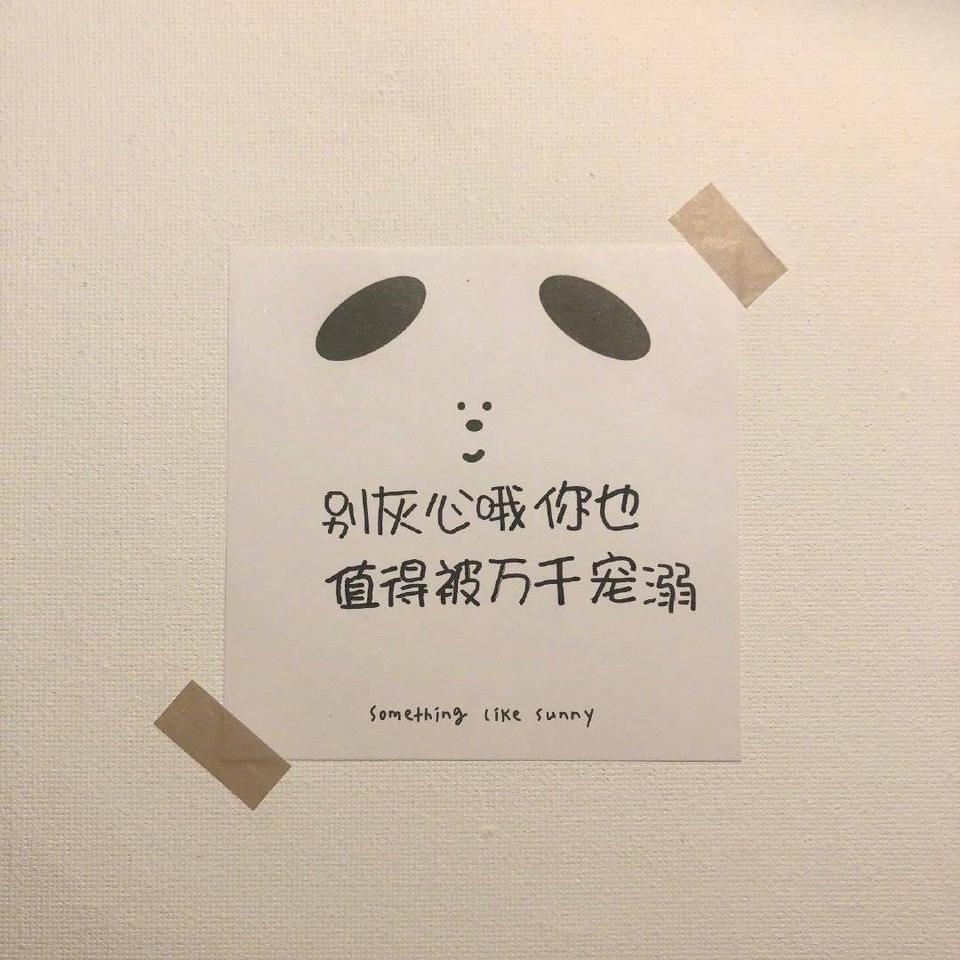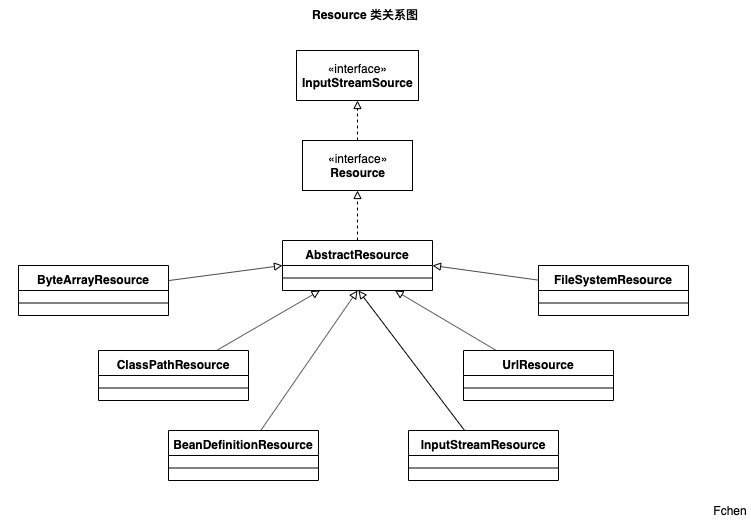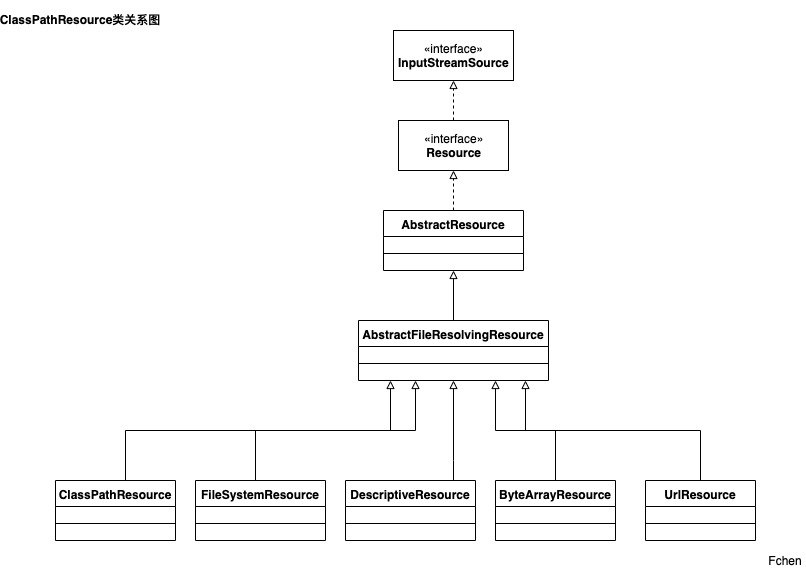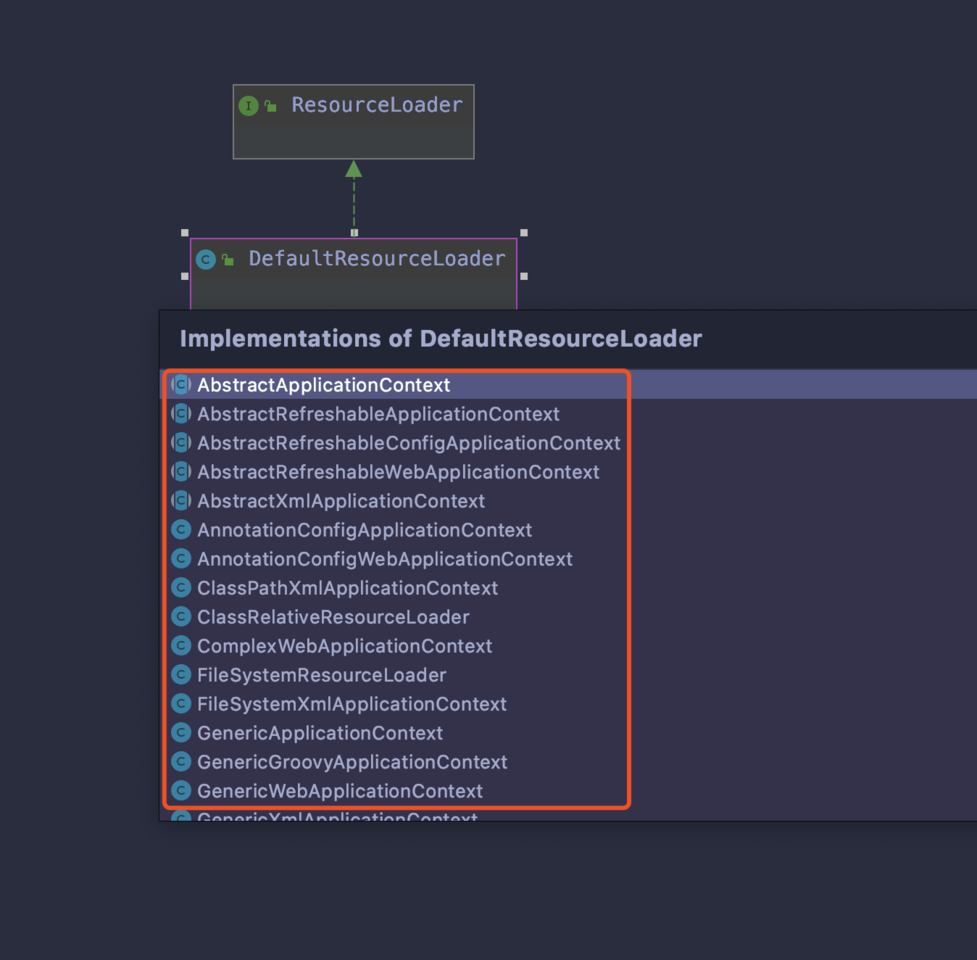
Spring 容器之 Resource 和 ResourceLoader
这篇文章是填之前文章的坑来了,首先在 XmlBeanFactory 中,有这么一行代码 new XmlBeanFactory(new ClassPathResource("spring-bean.xml")); 其中的 new ClassPathResource("spring-bean.xml")没有解释,这就是 spring 中的Resource。
其次,在 DefaultListableBeanFactory 中,new XmlBeanDefinitionReader(factory),中完成了对 ResourceLoader 的初始化,所谓的 ResourceLoader 就是对 Spring 资源加载的统一抽象。
在这篇文章中,对 Spring 中的资源,与资源的加载做一个统一学习。
Resource
Spring 把其资源做了一个抽象,底层使用统一的资源访问接口来访问 Spring 的所有资源。 也就是说,不管什么格式的文件,也不管文件在哪里,到 Spring 底层,都只有一个访问接口,Resource。 
- InputStreamSource 封装任何返货 InputStream 的类,比如 File,Classpath 下的资源和 Byte,Array 等。
- Resource 接口抽象了所有 Spring 内部使用到的底层资源:File,URL,Classpath 等。
- ClassPathResource 用来加载 classpath 类型资源的实现。使用给定的 ClassLoader 或者给定的 Class 来加载资源。
- ByteArrayResource 对字节数组提供的数据的封装。
- FileSystemResource 文件相关。
- UrlResource url 资源的加载。
ClassPathResource 的类关系图

AbstractResource 源码实现:
public abstract class AbstractResource implements Resource {
/**
* 判断文件是否存在,若判断过程产生异常(因为会调用SecurityManager来判断),就关闭对应的流
*/
@Override public boolean exists() { // Try file existence: can we find the file in the file system? try { return getFile().exists(); } catch (IOException ex) { // Fall back to stream existence: can we open the stream? try { getInputStream().close(); return true; } catch (Throwable isEx) { return false; } } } /** * 这个重写的方法始终返回true,表示可读 */ @Override public boolean isReadable() { return exists(); } /** * 这个重写方法始终返回false,表示没有打开 */ @Override public boolean isOpen() { return false; } /** * 这个从写的方法始终返回false,表示不是一个文件 */ @Override public boolean isFile() { return false; } /** * 抛出 FileNotFoundException 异常 */ @Override public URL getURL() throws IOException { throw new FileNotFoundException(getDescription() + " cannot be resolved to URL"); } /** * 基于 getURL() 返回的 URL 构建 URI */ @Override public URI getURI() throws IOException { URL url = getURL(); try { return ResourceUtils.toURI(url); } catch (URISyntaxException ex) { throw new NestedIOException("Invalid URI [" + url + "]", ex); } } /** * 抛出 FileNotFoundException 异常,交给子类实现 */ @Override public File getFile() throws IOException { throw new FileNotFoundException(getDescription() + " cannot be resolved to absolute file path"); } /** * 根据 getInputStream() 的返回结果构建 ReadableByteChannel */ @Override public ReadableByteChannel readableChannel() throws IOException { return Channels.newChannel(getInputStream()); } /** * 获取资源的长度 * 这个资源内容长度实际就是资源的字节长度,通过全部读取一遍来判断 */ @Override public long contentLength() throws IOException { InputStream is = getInputStream(); try { long size = 0; byte[] buf = new byte[256]; int read; while ((read = is.read(buf)) != -1) { size += read; } return size; } finally { try { is.close(); } catch (IOException ex) { } } } /** * 返回资源最后的修改时间 */ @Override public long lastModified() throws IOException { File fileToCheck = getFileForLastModifiedCheck(); long lastModified = fileToCheck.lastModified(); if (lastModified == 0L && !fileToCheck.exists()) { throw new FileNotFoundException(getDescription() + " cannot be resolved in the file system for checking its last-modified timestamp"); } return lastModified; } protected File getFileForLastModifiedCheck() throws IOException { return getFile(); } @Override public Resource createRelative(String relativePath) throws IOException { throw new FileNotFoundException("Cannot create a relative resource for " + getDescription()); } /** * 获取资源名称,默认返回 null */ @Override @Nullable public String getFilename() { return null; } @Override public boolean equals(Object other) { return (this == other || (other instanceof Resource && ((Resource) other).getDescription().equals(getDescription()))); } @Override public int hashCode() { return getDescription().hashCode(); } @Override public String toString() { return getDescription(); } }
ResourceLoader
。我们还是从ResourceLoader的类图入手, 可以看到 DefaultResourceLoader 为 ResourceLoader 默认实现。然后 ResourceLoader 为所有 Spring IoC 容器的父接口。这也就说明 所有的 IOC 容器都是具有加载资源的能力。
下面再来看看 ResourceLoader 与 DefaultResourceLoader 中的代码:
ResourceLoader 源码方法
public interface ResourceLoader {
/** 用于从类路径加载的伪URL前缀: "classpath:" */
String CLASSPATH_URL_PREFIX = ResourceUtils.CLASSPATH_URL_PREFIX;
/** * 根据所提供资源的路径 location 返回 Resource 实例 */ Resource getResource(String location); /** * 返回 ClassLoader 实例,对于想要获取 ResourceLoader * 使用的 ClassLoader 用户来说,可以直接调用该方法来获取 */ @Nullable ClassLoader getClassLoader(); }
ResourceLoader 默认实现
public class DefaultResourceLoader implements ResourceLoader {
@Nullable
private ClassLoader classLoader;
private final Set<ProtocolResolver> protocolResolvers = new LinkedHashSet<>(4); private final Map<Class<?>, Map<Resource, ?>> resourceCaches = new ConcurrentHashMap<>(4); /** * 创建默认的 ClassLoader */ public DefaultResourceLoader() { this.classLoader = ClassUtils.getDefaultClassLoader(); } /** * 创建默认的 ClassLoader,将传入的 ClassLoader 赋值给变量 */ public DefaultResourceLoader(@Nullable ClassLoader classLoader) { this.classLoader = classLoader; } public void setClassLoader(@Nullable ClassLoader classLoader) { this.classLoader = classLoader; } @Override @Nullable public ClassLoader getClassLoader() { return (this.classLoader != null ? this.classLoader : ClassUtils.getDefaultClassLoader()); } /** * 添加protocolResolvers */ public void addProtocolResolver(ProtocolResolver resolver) { Assert.notNull(resolver, "ProtocolResolver must not be null"); this.protocolResolvers.add(resolver); } public Collection<ProtocolResolver> getProtocolResolvers() { return this.protocolResolvers; } @SuppressWarnings("unchecked") public <T> Map<Resource, T> getResourceCache(Class<T> valueType) { return (Map<Resource, T>) this.resourceCaches.computeIfAbsent(valueType, key -> new ConcurrentHashMap<>()); } public void clearResourceCaches() { this.resourceCaches.clear(); } /** * 取得Resource 的具体过程 * @param location the resource location * @return */ @Override public Resource getResource(String location) { Assert.notNull(location, "Location must not be null"); for (ProtocolResolver protocolResolver : getProtocolResolvers()) { // 看有没有自定义的ProtocolResolver, // 如果有则先根据自定义的ProtocolResolver解析location得到Resource Resource resource = protocolResolver.resolve(location, this); if (resource != null) { return resource; } } if (location.startsWith("/")) { return getResourceByPath(location); } /* 处理带有classpath 表示的Resource*/ else if (location.startsWith(CLASSPATH_URL_PREFIX)) { return new ClassPathResource(location.substring(CLASSPATH_URL_PREFIX.length()), getClassLoader()); } else { try { // Try to parse the location as a URL... /* 处理URL 标识的Resource 定位*/ URL url = new URL(location); return (ResourceUtils.isFileURL(url) ? new FileUrlResource(url) : new UrlResource(url)); } catch (MalformedURLException ex) { // No URL -> resolve as resource path. /* * 如果既不是classpath,也不是URL标识的Resource定位,则把getResource的 * 重任交给getResourcePath(),这个是一个 protected 的方法,默认的实现是 * 得到一个 ClassPathContextResource,这个方法常常会用子类来实现 * 例如: FileSystemXmlApplicationContext#getResourceByPath() */ return getResourceByPath(location); } } } protected Resource getResourceByPath(String path) { return new ClassPathContextResource(path, getClassLoader()); } /** * 通过实现ContextResource接口 明确表示下文相关路径的ClassPathResource,此方法重点在于实现ContextResource */ protected static class ClassPathContextResource extends ClassPathResource implements ContextResource { // 通过调用父类的构造方法创建 public ClassPathContextResource(String path, @Nullable ClassLoader classLoader) { super(path, classLoader); } @Override public String getPathWithinContext() { return getPath(); } @Override public Resource createRelative(String relativePath) { String pathToUse = StringUtils.applyRelativePath(getPath(), relativePath); return new ClassPathContextResource(pathToUse, getClassLoader()); } } }
ResourceLoader 的扩展
ResourceLoader 用来加载 Spring 定义的资源,DefaultResourceLoader 是ResourceLoader默认的实现 ResourcePatternResolver 是 ResourceLoader 的扩展,它支持根据指定的资源路径匹配模式每次返回多个 Resource 实例。PathMatchingResourcePatternResolver 为 ResourcePatternResolver 最常用的子类,它除了支持 ResourceLoader 和 ResourcePatternResolver 新增的 classpath*: 前缀外, 还支持 Ant 风格的路径匹配模式(类似于 **/*.xml)。
PathMatchingResourcePatternResolver 是ResourceLoader 的子类实现,同样他的作用是用来加载资源Resource。通过 PathMatchingResourcePatternResolver 的构造方法可以看出,ResourceLoader的初始化,如果与传入则用传入对象完成初始化。没有传入则采用默认的子类实现。代码如下:
public PathMatchingResourcePatternResolver() {
// 使用无参 构造器 指定使用DefaultResourceLoader
this.resourceLoader = new DefaultResourceLoader();
}
public PathMatchingResourcePatternResolver(ResourceLoader resourceLoader) { Assert.notNull(resourceLoader, "ResourceLoader must not be null"); // 若指定了 ResourceLoader 则使用指定的 this.resourceLoader = resourceLoader; } public PathMatchingResourcePatternResolver(@Nullable ClassLoader classLoader) { // 指定类加载器的 通过给定的类加载器完成 ResourceLoader 的实例化 this.resourceLoader = new DefaultResourceLoader(classLoader); }
PathMatchingResourcePatternResolver 是用来加载资源的,通过下面的代码来看看,它是如何得到 Resource的:
通过初始化话的 ResourceLoader 获取单个 Resource。
@Override
public Resource getResource(String location) {
// 委托给初始化的ResourceLoader 获取资源
return getResourceLoader().getResource(location);
}
下面这个方法获取到的是 Resource[]:
@Override
public Resource[] getResources(String locationPattern) throws IOException {
Assert.notNull(locationPattern, "Location pattern must not be null");
// 以 classpath*: 开头
if (locationPattern.startsWith(CLASSPATH_ALL_URL_PREFIX)) {
// 路径包含通配符 if (getPathMatcher().isPattern(locationPattern.substring(CLASSPATH_ALL_URL_PREFIX.length()))) { // a class path resource pattern return findPathMatchingResources(locationPattern); } else { // 路径不包含通配符 return findAllClassPathResources(locationPattern.substring(CLASSPATH_ALL_URL_PREFIX.length())); } } else { int prefixEnd = (locationPattern.startsWith("war:") ? locationPattern.indexOf("*/") + 1 : locationPattern.indexOf(':') + 1); // 路径包含通配符 if (getPathMatcher().isPattern(locationPattern.substring(prefixEnd))) { return findPathMatchingResources(locationPattern); } else { // a single resource with the given name return new Resource[] {getResourceLoader().getResource(locationPattern)}; } } }
找到 classes 路径下和所有 jar 包中的所有相匹配的资源
protected Resource[] findAllClassPathResources(String location) throws IOException {
String path = location;
// 路径中以 "/" 开头 将 "/" 去掉
if (path.startsWith("/")) {
path = path.substring(1);
} // 这里是真正的方法 Set<Resource> result = doFindAllClassPathResources(path); if (logger.isTraceEnabled()) { logger.trace("Resolved classpath location [" + location + "] to resources " + result); } return result.toArray(new Resource[0]); }
真正加载 Resource的地方,这也符合 Spring 一以贯之的风格,真正做事的方法都是 doXXX来完成的。
protected Set<Resource> doFindAllClassPathResources(String path) throws IOException {
Set<Resource> result = new LinkedHashSet<>(16);
// 获取 classLoader
ClassLoader cl = getClassLoader();
// //通过classloader来加载资源目录,这里也会去找寻classpath路径下的jar包或者zip包
Enumeration<URL> resourceUrls = (cl != null ? cl.getResources(path) : ClassLoader.getSystemResources(path)); while (resourceUrls.hasMoreElements()) { URL url = resourceUrls.nextElement(); // 将找到的路径转化为 Resource 对象并添加到 Set 集合中 result.add(convertClassLoaderURL(url)); } if ("".equals(path)) { // The above result is likely to be incomplete, i.e. only containing file system references. // We need to have pointers to each of the jar files on the classpath as well... // 加载jar协议的资源 addAllClassLoaderJarRoots(cl, result); } return result; }
本文使用 mdnice 排版
